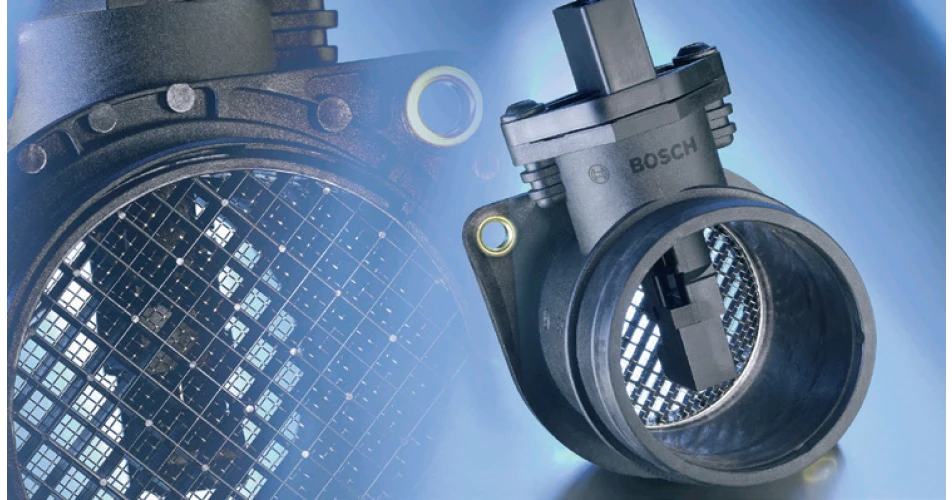BOSCH provides a tip on what to do when the ECU has a fault description of ‘air mass meter signal too low’. It should be noted that due to the parameters that the ECU monitors the air mass meter by, it is not uncommon for such issue not to be logged as a fault code, but still be present.
The possible causes of the problem are:
- Electrical connection and wiring between engine management ECU and sensor
- Air leaks
- Contamination of the sensor. This can be due to a heavily soiled air filter, the engine breather system or the turbo-charger causing oil mist within the inlet manifold, or water ingress.
The recommended diagnostic procedure is to inspect the unit itself but keep it in the air box at all times whilst testing it, as removal can affect the air flow characteristics and hence its signal output. Also be aware that hitting the unit with anything to try and remove contamination or cleaning it with solvents can cause permanent damage.
The technician should then carry out a vacuum gauge test at idle to establish that there are no mechanical problems.
Ignition or fuel supply faults should also be eliminated.
Moving on to ECU interrogation, the technician should plug in a diagnostic tester and look for actual values for the air mass signal (in Kg/hour or mg/s) at idle. Refer to a vehicle information system (e.g. Bosch ESI [tronic] Evolution) for value comparison and model specific information on testing.
Bosch says that in relation to air mass sensor signal voltage in comparison to throttle sensor voltage, it is a good idea to build up a workshop database on air mass values at idle (from good examples), as this can be handy for future reference.
More in-depth testing involves looking at the voltage output on a scope. The curve characteristics must be noted with rpm increase. Next give the throttle a hard fast blip. This will give a sharp voltage rise followed by a series of short peaks and troughs, or ‘pulses’ as the air in the engine settles back down. This is where experience and an in-house database of correct curves will help. Certain deviations in the primary and secondary voltage peaks will show up a problem. If a dual channel scope is available, test the throttle sensor voltage signal against air mass sensor signal. The voltage climb of the air mass meter should be roughly the same or even steeper. Generally, a shallower climb in the air mass meter signal will indicate deterioration. The air mass meter can be one of the hardest components in the entire engine management system to accurately diagnose but performing these tests a number of times should give the technician a good feel for problems with this component.
